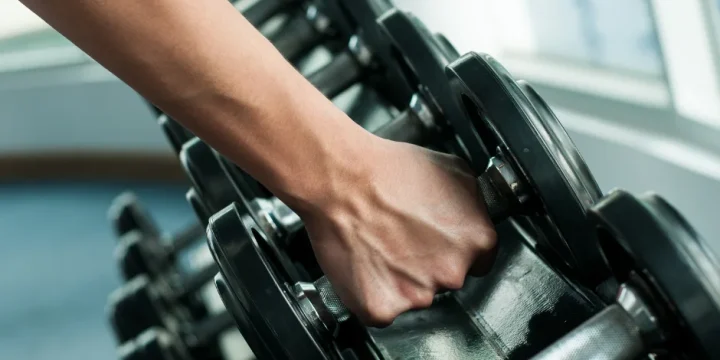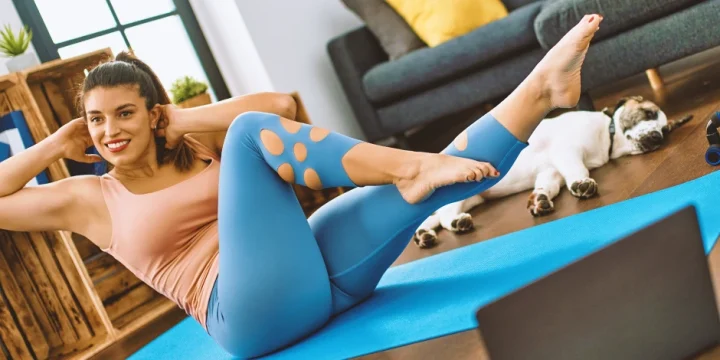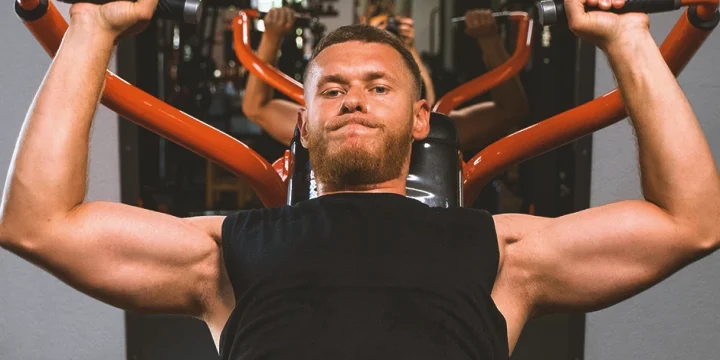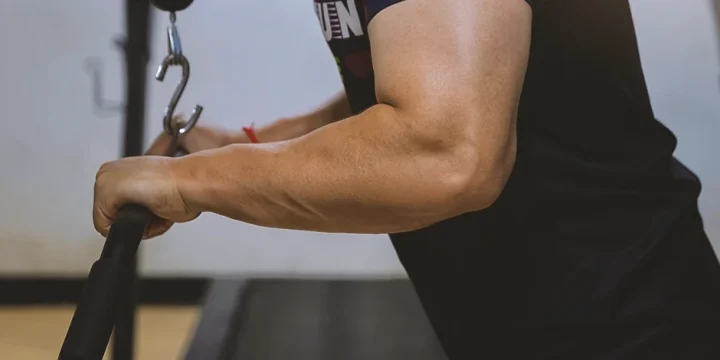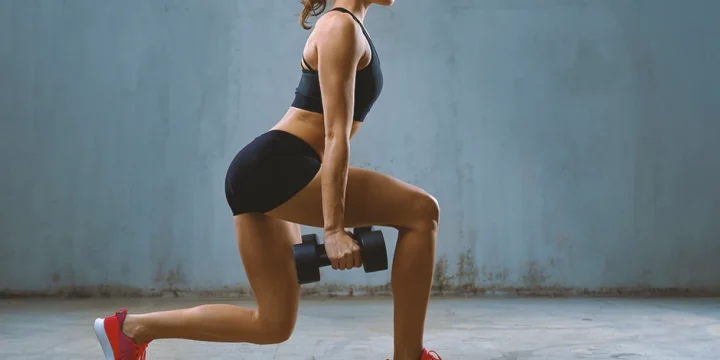The back is one of the most neglected parts of the upper body, so selecting proper exercises that induce the most significant hypertrophy and strength effects is crucial.
Based on my observations and experience as a certified personal trainer, I singled out the best back exercises to include in a high-volume back workout.
All exercises were tested and beginner-friendly to ensure everybody could experience the same muscle-building benefits.
After reading the article, you will have all the necessary information to implement a high-volume back workout into your weekly routine schedule.
Quick Summary
- The best high-volume back workout includes pull-ups, behind-the-neck pulldowns, barbell rows, T-Bar rows, deadlifts, back extensions, and more.
- The only way to ensure constant muscle development is to train for hypertrophy and use the principle of progressive overload.
- According to the National Institute of Health, exercises like seated cable rows and barbell rows activate key muscles such as the trapezius, lats, and posterior deltoids.
- In my opinion, the two most important movement patterns you should target to develop most of your back muscles include vertical and horizontal pull movement patterns.
High Volume Back Workout Exercises

Below I'll detail the best high-volume back workout exercises, including sets and reps.
"While other factors play into this such as deltoid size, body fat percentage, and skeletal frame, there is no greater way to play into our instinctual strength ideal than by building a massive back."
- Dustin Myers, Certified Strength & Conditioning Specialist
Pull-up
Pull-ups target latissimus dorsi, trapezius, and posterior deltoid muscles.
Pull-up bar exercises belong to the vertical pull movement pattern and are considered a compound exercise.
How to Perform a Pull-up
- Assume a hanging position on a pull-up bar with your elbows fully extended and shoulders fully abducted.
- Take a pronated grip and ensure your head, back, and legs are aligned.
- Start the exercise by pulling yourself toward the bar and stop when your chin reaches above it.
- Hold the top position for one second, then reverse the motion to return to the starting position (arms extended).
- Do 5 reps and repeat for 5 sets.
Behind-The-Neck Pulldown
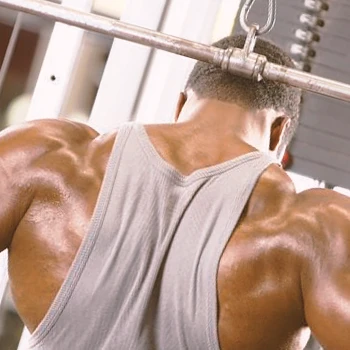
As a trainer, I often recommend behind-the-neck pulldowns as an alternative to regular lat pulldowns.
The wide grip lat pull, similar to the regular lat pulldown, works the same muscles and follows the vertical pull movement pattern.
How to Perform Behind-The-Neck Pulldowns
- Assume a sitting position on the lat machine and take a pronated grip on the lat bar.
- Ensure your elbows are fully locked and your legs tucked under the leg attachment.
- Start the exercise by pulling the lat pulldown bar towards your chin and stop when the bar reaches your collarbone.
- Hold the bottom position for one second and reverse the motion to return to the starting position (arms straight).
- Repeat for 4 sets and 8 reps.
Weighted Pull-up
Weighted pull-ups are a harder version of a regular bodyweight pull and follow the same muscle activation and movement pattern.
How to Perform Weighted Pull-Ups
- Wrap a weight on your belt with a chain attachment and assume a hanging position from a pull-up bar.
- Take a pronated grip with your hands and ensure your head, back, and legs are in line.
- Start the exercise by pulling yourself above the bar and stop when your chin reaches above the level of the pull-up bar.
- Hold the top position for a second, slowly bend your elbows, and abduct your shoulders to return to the starting position.
- Repeat for 3 reps and 4 sets.
Barbell Row
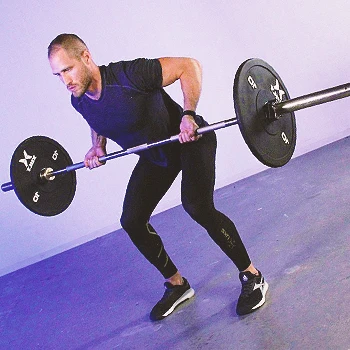
Barbell and seated cable rows are among the best exercises for thickening your upper back.
According to the National Institute of Health (NIH), seated cable rows and a barbell row follow the horizontal pull movement pattern and activate the trapezius, lats, and posterior deltoid muscles [1].
How to Perform Barbell Rows
- Load the barbell on the floor and assume a standing position in front of it.
- Take a pronated grip and lift the barbell off the floor while your back remains flat.
- Bend your torso forward and let the barbell hang from your hands.
- Start the exercise by rowing the barbell towards the stomach and stop when the bar reaches just above the surface of your torso.
- Hold that position for one second and reverse the motion to return to the starting position.
- Repeat for 4 sets and 8 reps.
T-Bar Row
The bar row activates the same muscles and follows the same movement pattern as the regular barbell row.
How to Perform T-Bar Rows
- Load the bar with the appropriate weight and put it between your legs.
- Take the attachment and put it below the bar.
- Bend your torso slightly forward while remaining your back flat, and take a close grip.
- Start the exercise by rowing the bar towards your stomach.
- When the bar reaches close to your stomach, hold that position for one second and reverse the motion to return to the starting position.
- Repeat for 4 sets and 8 reps.
Hammer-Strength Machine Row
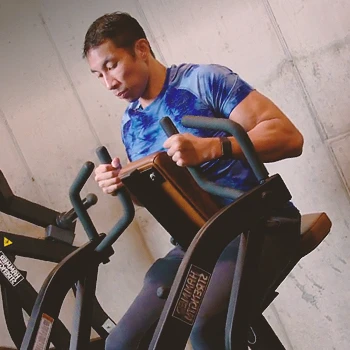
Hammer-strength machine row activates your lats, traps, and posterior deltoid.
How to Perform a Hammer-Strength Machine Row
- Assume a sitting position on the machine.
- Take a pronated grip and keep your back flat.
- Start the exercise by rowing the handles towards your middle torso area.
- When you reach the end range of motion, hold that position and keep the constant tension for one second.
- Reverse the motion to return to the starting position.
- Repeat for 4 sets of 10 reps.
Also read: Machine High Row Alternative: Any Gym Exercises
Low-Pulley Row
I find the low-pulley row to be one of the most functional row variations, targeting the usual muscle groups plus additional core muscles.
While the seated cable row is also effective, it's not quite as functional as the low-pulley version.
How to Perform a Low-Pulley Row
- Set the appropriate weight for a cable machine.
- Take the handle and two steps back.
- Start the exercise by rowing the handle with your working arm towards the hip on the same side.
- When your hand reaches the hip level, reverse the motion to return to the starting position.
- Repeat for 3 sets and 12 reps.
Deadlift
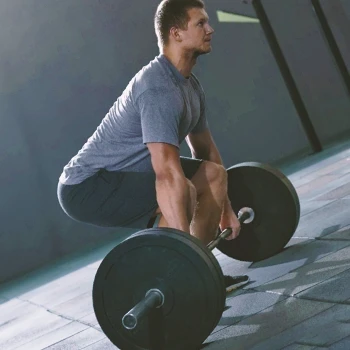
According to the NIH, a deadlift is a whole-body exercise requiring significant lower back strength and is excellent for taking your leg training to the next level [2].
How to Perform Deadlifts
- Load the barbell with the appropriate weight and place it on the floor.
- Assume standing before the barbell and taking a shoulder-width pronated grip.
- Keep your back flat during the whole movement to avoid injuries.
- Start the exercise by pulling the bar upward and extending your knees and hips.
- When you reach the top position, put the loaded barbell on the floor and repeat the process.
- Repeat for 5 sets of 3 reps.
Related: Deadlift Alternatives for Your Workout
Back Extension
Back extensions are excellent for developing strong erector spinae muscles.
How to perform back extensions
- Assume a lying position on a back extension machine.
- Start the exercise by lowering your torso toward the ground.
- When you reach the bottom position, reverse the motion to return to the starting position.
- Repeat for 3 sets of 12 reps.
Posts You May Like:
Benefits of Performing High Volume Back Workout
- Increased Muscle Hypertrophy: High volume back workouts are excellent for mass building. The increased number of sets and reps stimulates muscle growth (hypertrophy) by creating more muscle damage, leading to greater muscle repair and growth during recovery.
- Enhanced Muscular Endurance: These workouts improve muscular endurance. The high volume forces your back muscles to adapt to prolonged exertion, enhancing their ability to sustain effort over longer periods, which is beneficial for overall strength and fitness.
- Boosted Metabolic Rate: High volume training can increase your metabolic rate. The intensity and duration of the workout require more energy, which can lead to higher calorie burn both during and after the workout, aiding in fat loss and muscle definition.
- Improved Overall Strength: Focusing on the back muscles with high volume workouts contributes significantly to overall upper body strength. A strong back is crucial for compound movements and helps improve posture, reduce the risk of injury, and enhance performance in various physical activities.
FAQs
Is High Volume Good for Back?
Yes, a high volume is good for your back. High-volume back training is excellent for developing strength or muscular endurance depending on how the rest intervals and percentage of 1RM (repetition maximum) are set.
How Do I Add Volume to My Back Muscles?
You add volume to back muscles by using the principle of progressive overload. Progressive overload is a principle that involves increasing reps, sets, and weight and changing the rest interval.
Can Too Much Volume Hurt Gains?
Yes, too much volume can hurt your gains. You may hurt your gains if you enter the overtraining state or don’t allow your body to rest enough between the sets.
References:
- https://pubmed.ncbi.nlm.nih.gov/19197209/
- https://www.ncbi.nlm.nih.gov/pmc/articles/PMC7046193/
About The Author
You May Also Like
